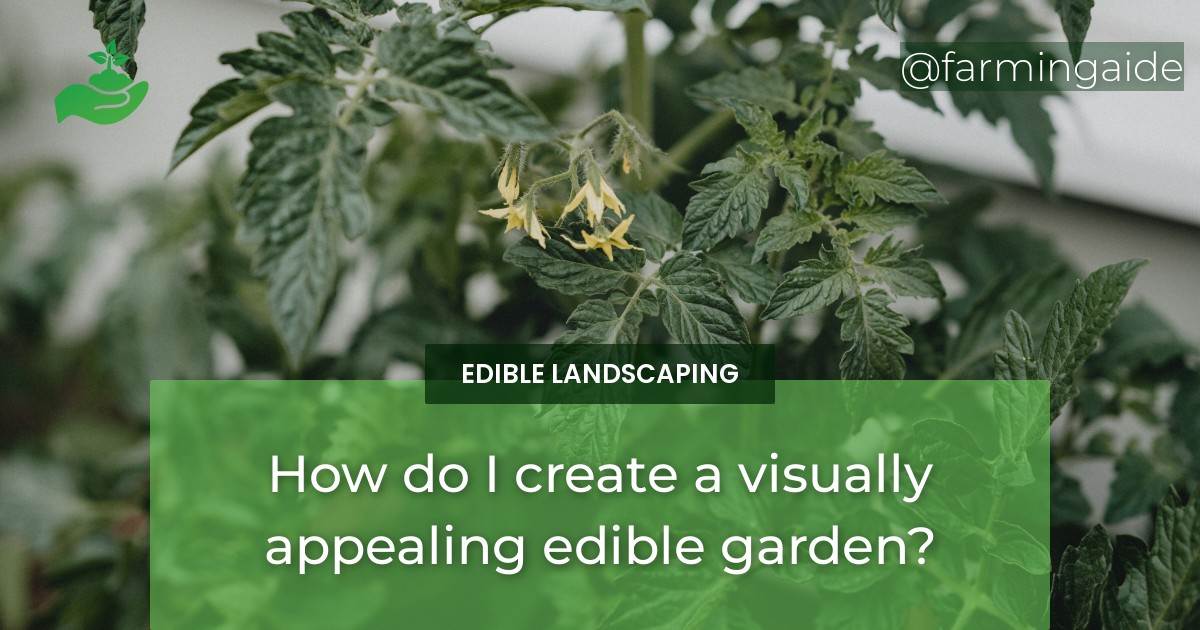Creating a visually appealing edible garden involves more than just planting vegetables and fruits. It involves incorporating design elements that will enhance the overall aesthetic of the garden. A well-designed edible garden can not only provide fresh produce but also add to the beauty of the outdoor space. Here are some garden design tips to help you create a visually appealing edible garden.
How to Create a Visually Appealing Edible Garden
Color Combinations
Choosing the right color combinations can make all the difference in the visual appeal of your garden. Here are some color schemes to consider:
Warm Colors
Warm colors such as red, orange, and yellow can create a sense of warmth and energy in your garden. These colors can be used to add interest and create a focal point in the garden.
Cool Colors
Cool colors such as blue, green, and purple can create a sense of calmness and serenity in your garden. These colors can be used to create a relaxing and tranquil space.
Monochromatic Color Scheme
A monochromatic color scheme involves using variations of one color. This can create a harmonious and cohesive look in your garden.
Complementary Color Scheme
A complementary color scheme involves using colors that are opposite each other on the color wheel. This can create a vibrant and eye-catching look in your garden.
Triadic Color Scheme
A triadic color scheme involves using three colors that are evenly spaced on the color wheel. This can create a balanced and visually appealing look in your garden.
Plant Textures
Plant textures can add depth and interest to your garden. Here are some textures to consider:
Fine-Textured Plants
Plants with fine textures such as herbs and ferns can create a delicate and airy look in your garden.
Coarse-Textured Plants
Plants with coarse textures such as succulents and cacti can create a bold and dramatic look in your garden.
Medium-Textured Plants
Plants with medium textures such as most vegetables and fruits can create a balanced and harmonious look in your garden.
Focal Points
Focal points are important design elements that draw the eye to a specific area of the garden. Here are some focal points to consider:
Garden Art
Garden art such as sculptures and statues can add a unique and artistic touch to your garden.
Water Feature
A water feature such as a fountain or pond can add a soothing and calming element to your garden.
Garden Furniture
Garden furniture such as benches and tables can provide a functional and comfortable seating area in your garden.
Sculptures
Sculptures made from natural materials such as wood or stone can add a rustic and natural touch to your garden.
Trellis or Arbor
A trellis or arbor can create a vertical element in your garden and provide support for climbing plants.
Edible Plants with Interesting Foliage
Choosing edible plants with interesting foliage such as purple basil or rainbow chard can add color and interest to your garden.
Seasonal Interest
Creating seasonal interest in your garden can keep it looking fresh and visually appealing all year round. Here are some ideas:
Spring
Spring-blooming plants such as tulips and daffodils can add a burst of color to your garden.
Summer
Summer-blooming plants such as sunflowers and zinnias can add vibrant colors to your garden.
Fall
Fall-blooming plants such as mums and asters can add warm and rich colors to your garden.
Winter
Winter-blooming plants such as holly and winter jasmine can add greenery and interest to your garden.
Other Tips for a Visually Appealing Edible Garden
Here are some additional tips to keep in mind when designing your edible garden:
- Group similar plants together for a cohesive look.
- Use raised beds or containers for a neat and organized look.
- Incorporate hardscaping such as stones or bricks for a structured and defined look.
- Add lighting for nighttime appeal.
- Keep your garden clean and tidy for a polished and well-maintained look.
- Use edible flowers for color and interest.
Creating a visually appealing garden is all about finding the right plant combinations, textures, and design elements that work well together. With these tips, you can create an aesthetic edible garden that not only provides fresh produce but also delights the senses.
RELATED ARTICLES:


